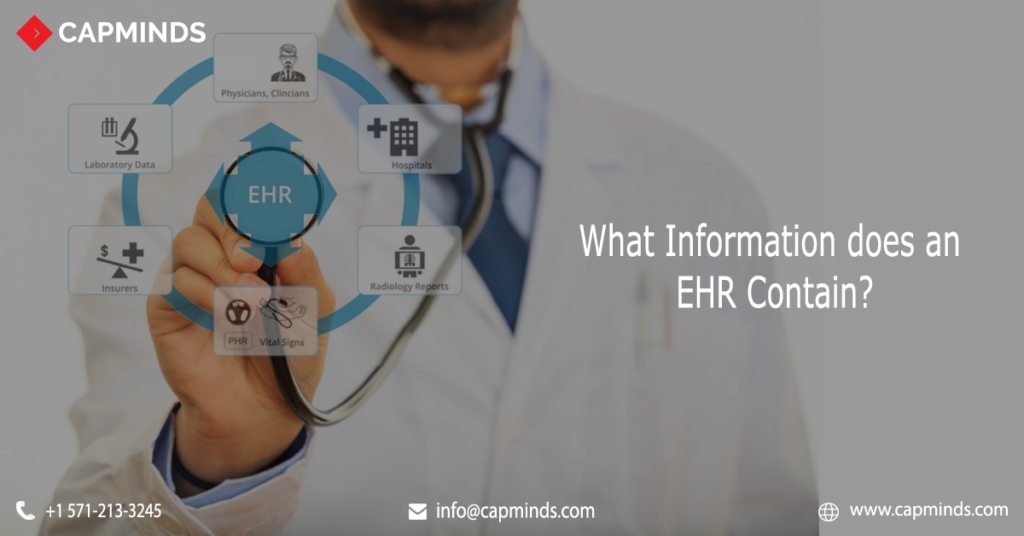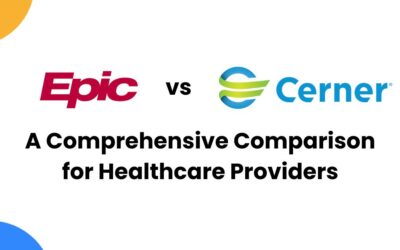What Information does an EHR Contain?
An EHR is not just a piece of paper or a software that you will find in the office of a healthcare officer. It is a comprehensive record of your patient’s health. It is built so that information is shared across different departments who might require it to ensure proper care for the patients. EHRs provide real-time transfer of data instantly to labs, specialists, pharmacies, workplace clinics, pharmacies, etc.
One of the most important features of EHR is that the health information of patients can be stored in a digital format which is capable of being shared across the entire spectrum of healthcare-related services.
Benefits of EHR:
- It provides complete information about the health records of patients to the authorities concerned.
- Securely share highly-sensitive patient information with patients and other healthcare service providers.
- Helps care providers effectively diagnose patients, provide better care, and reduce medical errors.
- Allows access to evidence-based tools that healthcare providers use to offer superior care.
- It eliminates the risk of losing patient data by theft, mismanagement, or alteration of data.
- Update and access patient information in real-time
- EHR systems allow interoperability
Here are the core functionalities that an EHR system should have:
- Administrative data
- Billing data
- Patient Demographics
- Vital signs
- Medical Histories
- Result Management
- Order Management
- Decision Support
- Patient Support
- Reporting and Population Health
- Diagnoses
- Immunization Dates
- Allergies
We have taken the liberty of explaining a few of the EHR functions in detail below:
Manage Patient Demographics- An EHR system should help capture and maintain demographic information of the patient as it would be helpful in understanding the patient deeply. The data should be relevant, available in the form of a report, and should be trackable over time.
Maintain patient record- The details of the patient, the kind of treatment they are undergoing and other details should not be misplaced at any time. When a patient comes after a long time, this record can be used to understand their needs easily without having to pore through disconnected records.
Patient History- The EHR system should be able to add, capture and manage procedural, social and family history including the capture of positive and negative history. It should also be able to add externally available history of the patient.
Manage clinical notes- The system should be able to capture, add, correct, verify and close the transcription on the medical notes.
Capture plans, guidelines, and protocols- The system should be able to present the guidelines for patient care as applicable to support order entry and documentation.
Capture patient-specific instructions- The EHR system should be able to generate and record patient-instructions to pre-procedural, post-procedural and post-discharge documents.
Order diagnostic orders- Submit test orders based on inputs from specific care providers.
Manage results- Present current and historical test results to appropriate clinical personnel for review along with the added ability of filtering them.
Manage authorizations- Maintaining and verifying patient treatment decisions in the form of consents.
Alerts for preventive services- If the patient is supposed to take preventive services, then the patient should be suggested or reminded about them.
Inter-provider communication- Support and secure electronic communication, both inbound and outbound, between providers to respond to actions.
Dealing with cybersecurity threats in healthcare:
The fact that most of the information is passed through networks that are interconnected, there is no doubt the EHR systems are susceptible to cybersecurity attacks. Apart from just medical information, EHR systems also carry financial information which if stolen can stymie the operations of the entire hospital.
If you plan to buy your EHR system from a small player, they might not be sufficiently protecting themselves against cyberattacks. Criminals are in a position to not only use the information to blackmail the healthcare provider but also use medical history of patients and use it for nefarious purposes.
Make sure that the EHR vendor you choose is in a position to protect your business against any of these cybersecurity issues. EHR can completely modernize the way your healthcare operations run, but you need to have a stable and robust infrastructure which doesn’t put you or your patients in trouble into any sort of trouble.
Conclusion:
Do you want to take your medical organization to the next level where you can smoothen your operations, worry less about your financial calculations, take care of your patients properly and see an overall improvement in everything that it does? Then getting an EHR vendor like CapMinds will do a world of wonder for your business. Talk to one of our representatives to chart an EHR success strategy for your healthcare service. Maybe it’s the change that you should make for bigger successes.
Keep your patients happy and satisfied by leveraging the services of an EHR vendor. You will able to spend more time on your patients than taking care of documentation, recording and everything else that is best left to the experts.




